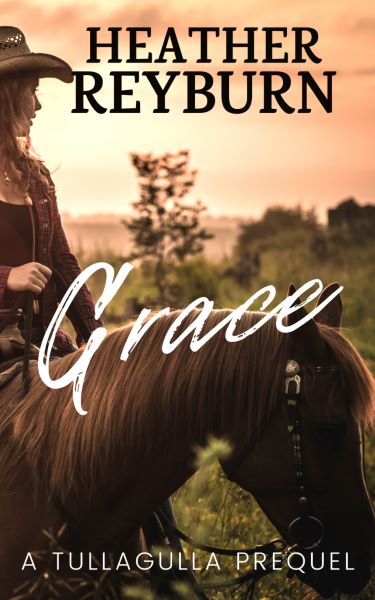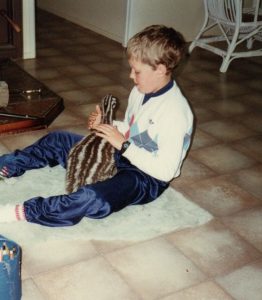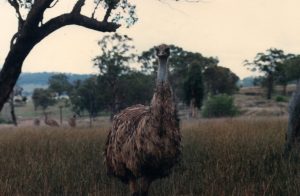
Join my mailing list to read for free!
100% privacy guaranteed.

100% privacy guaranteed.
During the 1990’s, farming Ostriches and Emus became popular in Australia, with a demand for their eggs (to be blown for carving), feathers and in particular, Emu oil.
It was in theory a great idea, particularly as Emu oil had been tested and proven to be very good for the skin. However, like many great ideas, the practicalities were more complex, despite Emus being native to Australia and extremely hardy. Nevertheless, we decided to add Emu farming to our portfolio.
After obtaining the necessary permits, building the ideal pens and paddocks to hold the minimum allowance of fifty birds, we took delivery of our Emus.
Over the following two years, they grew well, ate an enormous amount of grain, and then the processing facilities in Queensland closed down. Our bad luck! The closest market became Victoria—over 1,500 kilometres away—with transport of these enormous birds being an interesting and expensive challenge.
While we waited to see which way the industry would go, a fellow emu farmer rang me one morning to ask if I would take a chick that had hatched unexpectedly in his incubator. As he was winding down his business, he didn’t want any more chicks, so, ever the softee, I agreed—and Squeak was delivered.

He was the sweetest little bird ever and became totally attached to me. When I went to town to shop, I had to lock him in a completely dark container, resembling being tucked under his father (yes, Emu chicks are reared by their fathers, not their mothers). He would sleep for the duration and become my shadow again as soon as I released him. At the same time Squeak was a juvenile, I also had four baby kangaroos and several lambs requiring a bottle of milk several times a day. The lambs were kept in the woolshed, approximately 350 metres from the house, and every time I trailed down to feed them, I resembled the ‘Pied Piper’. Squeak would accompany me, running along by my side on his strong, constantly growing legs, together with our dogs, three hand-reared fully grown kangaroos and my two pet milking goats. While he was still quite young, my mother came to stay for two weeks and helped me plant out my seedlings for spring. We chatted as we worked and when we finally reached the end of the garden bed, turned around to see Squeak carefully removing the last seedling from the ground. Every single plant had been pulled out. We had to lock him up and begin again.
 Squeak became more independent and grew tall, able to look me straight in the eye. As he reached this height, we noticed one of his legs failed to operate properly and he often fell over. A visit from a veterinary friend and fellow emu farmer confirmed our awful suspicions. Squeak was one of the unfortunate. Large birds sometimes develop a malfunctioning ball-in-socket problem with one or both hips. While this condition was not common, it was Squeak’s—and our—bad luck. There was no cure, no surgery available and no choice. Sadly, Squeak’s life came to a sad, but humane end.
Squeak became more independent and grew tall, able to look me straight in the eye. As he reached this height, we noticed one of his legs failed to operate properly and he often fell over. A visit from a veterinary friend and fellow emu farmer confirmed our awful suspicions. Squeak was one of the unfortunate. Large birds sometimes develop a malfunctioning ball-in-socket problem with one or both hips. While this condition was not common, it was Squeak’s—and our—bad luck. There was no cure, no surgery available and no choice. Sadly, Squeak’s life came to a sad, but humane end.
We continued farming Emus for a while longer, becoming quite attached to some of the birds, while the bank balance dropped alarmingly.
With the cost of keeping fifty adult Emus well fed and healthy, we made the decision to cut our losses and there ended our episode of Emu farming. It was a great learning experience and we had no regrets.
Learning so much about these wonderful birds became another chapter in the ups and downs of farming!

Such a fun piece here slightly different to your others very enjoyable